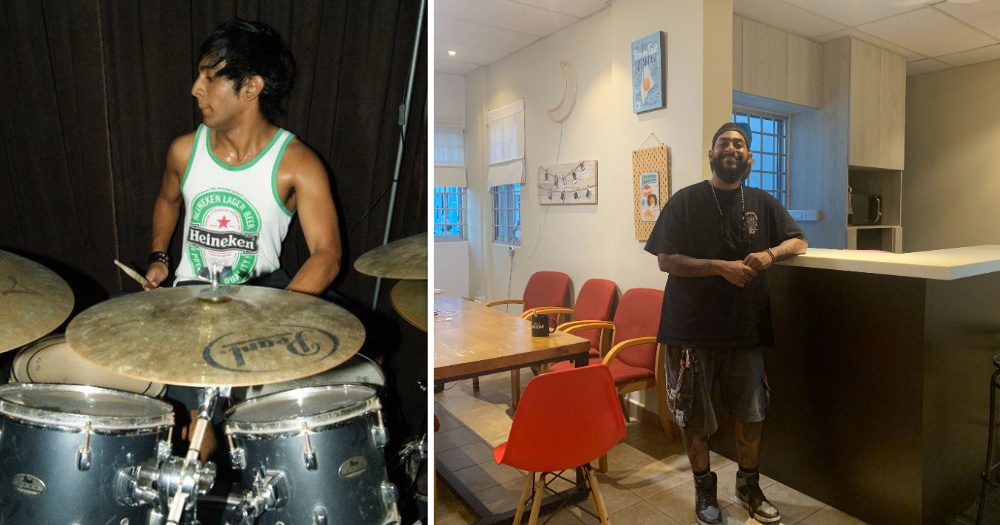Follow us on Telegram for the latest updates: https://t.me/mothershipsg
PERSPECTIVE: Aldrich Jai Kishen Ramakrishnan entered Boys’ Town in 2007 after displaying various “rebellious behaviours”, including smoking and skipping class.
He was in residential care at Boys’ Town throughout Secondary School, before graduating from the charity in 2010.
Jai shares why he eventually returned to the organisation – which has since evolved from a home for troubled boys, to a place that offers shelter and protection to boys who need it – as a youth worker in 2016.
Now 28, the senior youth worker organises regular street outreach programmes and engages with youths who face a range of issues such as self-harm, struggles in school, and conflict in relationships, as part of Boys’ Town’s YouthReach programme.
He explains why and how social work clicked for him, and talks about the purpose the job has held for him for the past six years.
By Aldrich Jai Kishen Ramakrishnan, as told to Lean Jinghui
My mum signed me into Boys’ Town after PSLE, when I was 13.
I was a very rowdy boy, and my mum found it hard to raise me at that point when I started displaying various rebellious behaviours.
Looking back, it was probably a way for me to let go of the anger and frustration I felt from losing my dad at 10.
So I would smoke, go to the skate park instead of going home after school, and hang out with my friends instead.
Four years’ in residence
My first week of entering Boys’ Town, I hated it; it was like, “Oh man, what did I do to deserve this?”
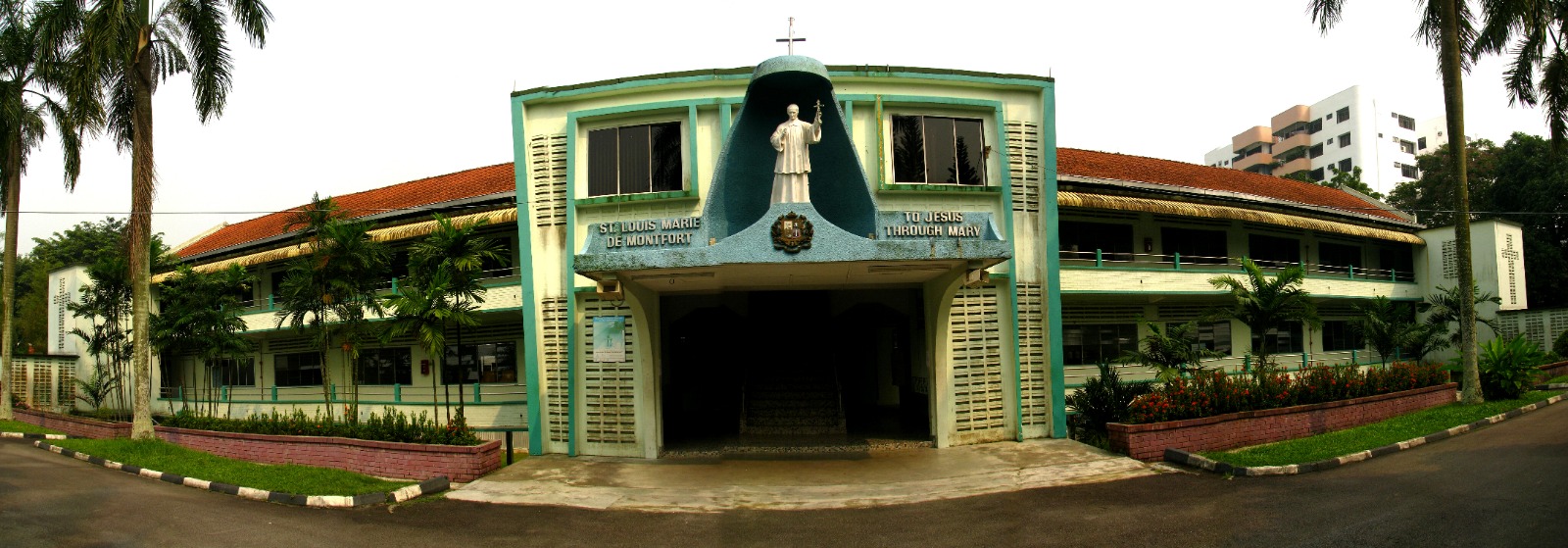 The old Boys’ Town dormitory where Jai used to stay in. Courtesy of Boys' Town.
The old Boys’ Town dormitory where Jai used to stay in. Courtesy of Boys' Town.
It was only after I got to interact with the boys in the dorm and the staff, that I started learning a lot of things I think I wouldn’t have developed otherwise.
Each day was really structured – we went to school, had lunch, some admin rest time, games, dinner, then sleep.
In hindsight, it was great, but in the thick of it, I was like: “I just want to go out to play LAN with my friends and have nice food.”
Towards age 15, I was given a lot of empowerment and freedom to be creative, and I picked up the drums.
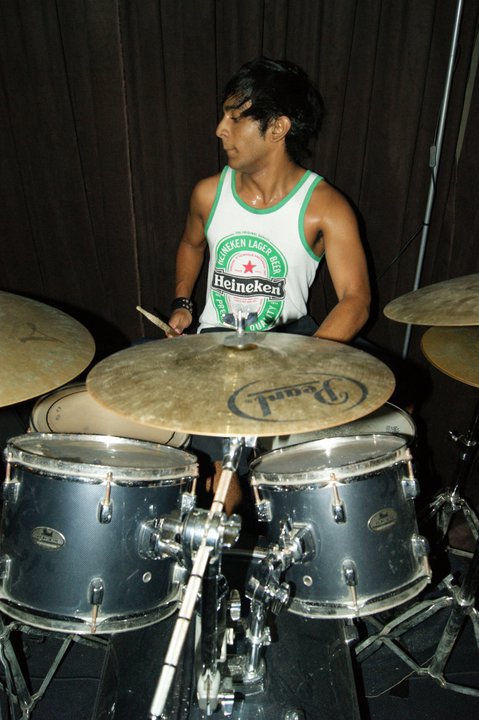 Photo by Jai
Photo by Jai
As much as I wanted to leave, that was when I also got with the programme – I figured since I was going to be stuck in residence, I might as well take full advantage of it.
It came to a point where the staff gave me full permission to use the music room whenever, in exchange for me taking care of it.
That sort of respect from the staff was something I never got as a young boy, with everyone usually just looking at us like youth-at-risk or gangsters.
For the staff to do that – it made me realise the importance of empowerment and trust – and that it does a lot for a young boy.
It made me want to emulate the way the staff treated us [older boys] to the younger boys too, so everyone grew up in that holistic environment.
Getting into youth work
The day I left Boys’ Town, I was really like “YES, freedom, I am never going back.”
After I graduated, I studied in the digital audio and visual production programme at ITE west, and my goal became to do gonzo journalism.
I also worked two part-time jobs to pay my rent, as I moved out at 17.
Then in 2016, a staff from Boys’ Town contacted me, and told me Boys’ Town was hiring.
I thought about it and realised I didn’t mind giving it a try for a year.
So I applied after I was done with school.
I started working at Boys’ Town as a youth worker at 22, in August 2016.
Boys’ Town had changed by the time I went back – instead of one melting pot, it now had a main group home [for boys who were beyond parental control or had a Family Guidance Order] and a shelter [for boys who might be abused or neglected].
I never intended to stay as long as I did.
It was more like: “I'll go back for a year or so, ‘give back’ to society, scold these boys a bit, then I’ll leave to do what I want.”
However, when I went back, I realised that it was already a different climate, and that the boys now had different needs.
That was when I dug into my own experience and thought about the things that had made me feel good as a boy. Things that my youth workers had done for me.
I also met up with a couple of my former youth workers, to seek their advice.
Switching from “giving back” to “I’m learning”
As I started working with the boys, I began to understand the struggles they face.
Oftentimes, we look at their struggles and consider them immature and childish, but their problems mean a lot to them.
There’s a lot of importance in building that narrative, and asking, “Can you tell me how this makes you feel?”
Often they’ll give me this look, as if asking: “You really want to hear about my sad girlfriend break up story?”
Then me just showing that I’m interested gets them to open up, and they’ll thank me for just listening.
The moment my brain switched from “I'm giving back” to “I'm actually learning, this is a two way transaction”, was when youth work clicked for me.
And I decided to stay on after my one year review.
I was always influenced by music, so I began looking at ways to improve the boys’ experience through percussion.
We would use big black dustbins for drums, and smaller pails to create different sounds.
I wouldn’t call it therapy, but I know the boys loved the sessions. I ran it every Thursday, during games time.
 Jai with the boys’ during one of the percussion sessions. Via Boys’ Town YouTube
Jai with the boys’ during one of the percussion sessions. Via Boys’ Town YouTube
The youth workers at Boys’ Town would also often get together to update each other about every boy, so we could provide consistent care for them.
These discussions on what worked and what didn’t motivated me, because we were able to learn new things together and constantly improve with each other.
Continuing with youth work
What keeps me going when youth work gets difficult is that I might be one of the few people who can relate to some of the things the boys go through.
A lot of these boys did nothing to be in Boys’ Town, especially now that we have a lot of child protection and complex trauma cases.
As a former resident, I can relate to that experience where, as much as I loved my time there, I hated that I was stuck in a place I didn’t want.
Knowing that and giving the boys the space to talk about their situation, and how they can make the best of it, is what I hope to impart to my boys. To have that renewed outlook.
I feel their struggle and I’m now in a position to support.
Knowing the residential dos and don’ts as a former boy, I often try to use my experience to support and explain things to them too.
Moving to YouthReach in 2018
Enjoying my time in residential services, I was initially hesitant when asked to consider a role at YouthReach.
The reason I ended up moving was actually because of something a boy told me.
He said I should take the job, because in Boys’ Town, I can only see them as they are there, but if I move to YouthReach, I can follow on with them after they leave.
That conversation made me realise that I can do a longer journey with different youths if I move on to an outreach programme.
So after speaking to various colleagues, I moved to YouthReach in 2018.
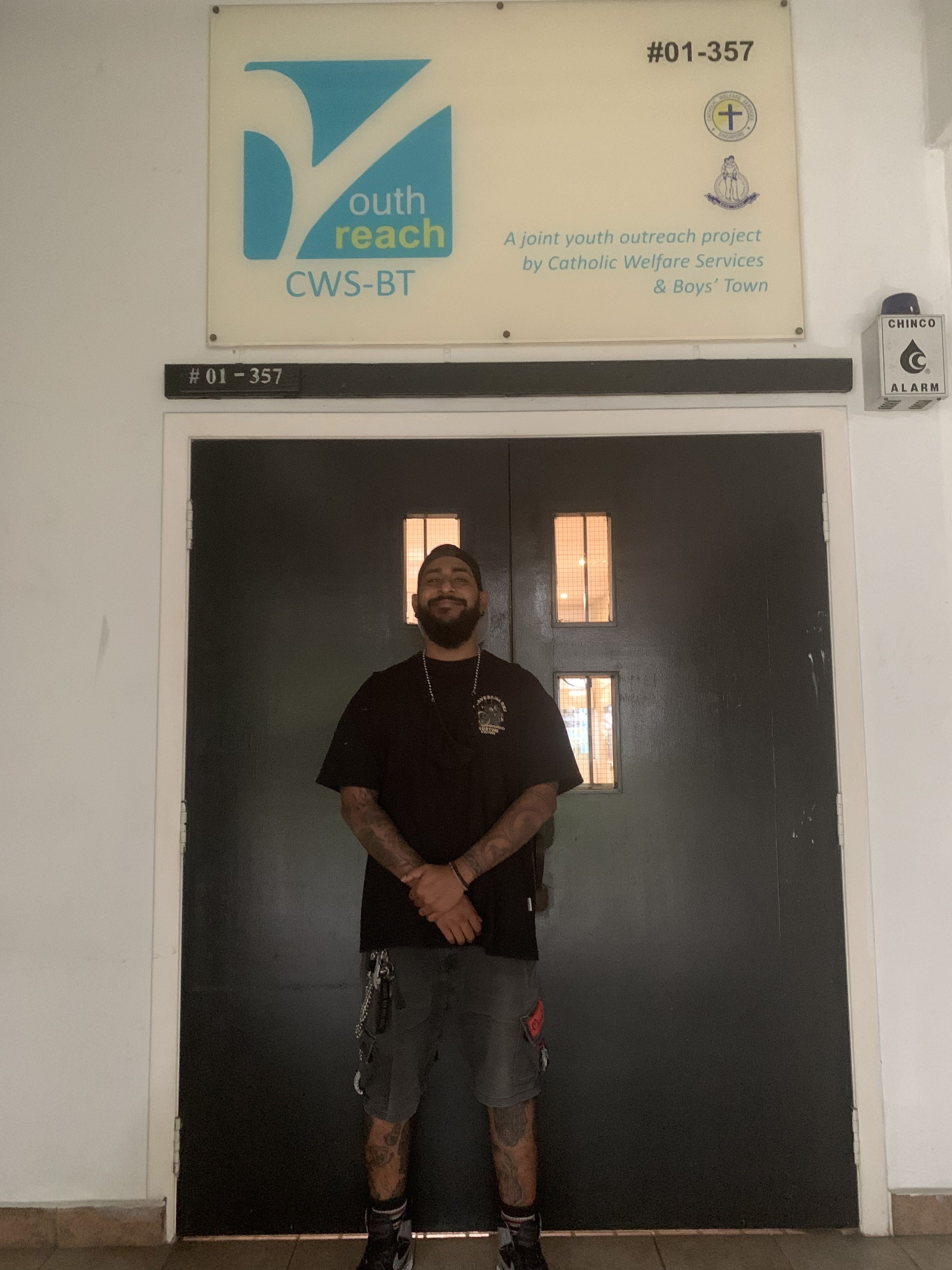 Jai at the entrance to the YouthReach branch in Tampines, which is located at the ground level of an HDB block. Photo by Lean Jinghui
Jai at the entrance to the YouthReach branch in Tampines, which is located at the ground level of an HDB block. Photo by Lean Jinghui
I was definitely a fish out of water when I first entered, as the youths we meet at YouthReach are very different.
These are your everyday youths, youths you meet out on the streets.
 A stereotyped depiction of the youths, as shared by the boys and girls that meet the youth workers during their sessions. This is a wall in one of the rooms at the YouthReach centre, meant to represent the youths that visit the centre, but told from their perspective. YouthReach provides support for both boys and girls, usually aged 10-24, shares Jai. Photo by Lean Jinghui
A stereotyped depiction of the youths, as shared by the boys and girls that meet the youth workers during their sessions. This is a wall in one of the rooms at the YouthReach centre, meant to represent the youths that visit the centre, but told from their perspective. YouthReach provides support for both boys and girls, usually aged 10-24, shares Jai. Photo by Lean Jinghui
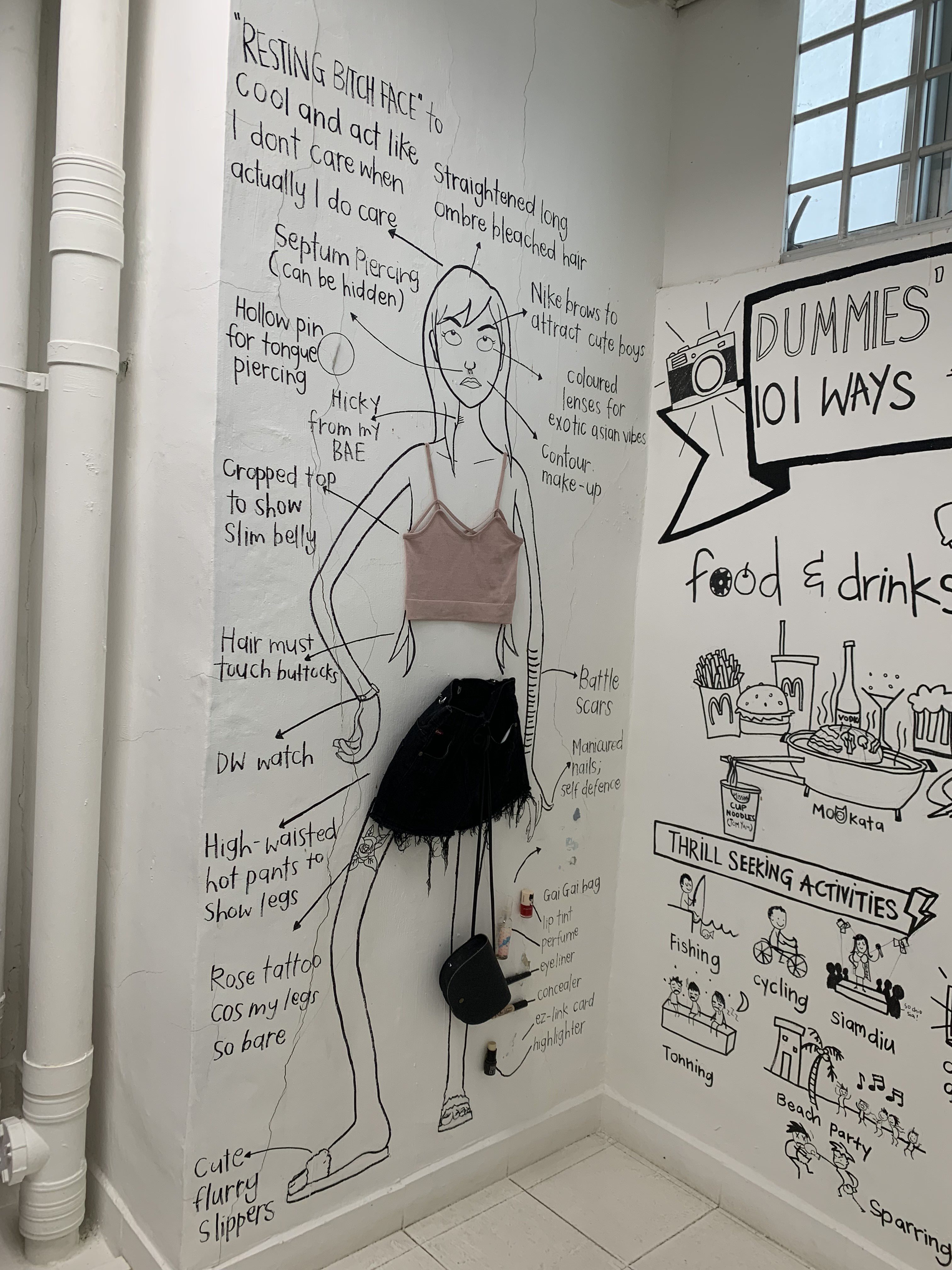 The female version. Photo by Lean Jinghui
The female version. Photo by Lean Jinghui
The structure at Boys’ Town is gone, as the youths go to their own schools, and have their own schedule.
While at Boys’ Town, I played a more authoritative role, but at YouthReach, the youths have no reason to come in and see me.
So part of the job was getting used to being ghosted: Where you set an appointment, and they don’t show, or you text and they don’t reply.
It’s understandable because I’m literally a stranger they met on the street – to me, it is about letting the youths know that if they ever need support, they can reach out to me.
In fact, I still have this system where every Monday, I come into work, and text all of my youths to check in.
 The common room of the YouthReach office is decorated with signboards and polaroid pictures to create a homely atmosphere. Photo by Lean Jinghui
The common room of the YouthReach office is decorated with signboards and polaroid pictures to create a homely atmosphere. Photo by Lean Jinghui
 The dance studio, used for multiple functions and purposes, from boxing classes to dance classes and other craft activities. Photo by Lean Jinghui.
The dance studio, used for multiple functions and purposes, from boxing classes to dance classes and other craft activities. Photo by Lean Jinghui.
 The “pool room”, where the youths sometimes hang out while waiting for a room to talk to their youth worker one-on-one. Photo by Lean Jinghui.
The “pool room”, where the youths sometimes hang out while waiting for a room to talk to their youth worker one-on-one. Photo by Lean Jinghui.
My first “success” case was this boy, whom I had texted for two months with no reply.
Then one day, he responded to one of my texts, and shared that his day had gone pretty bad, and asked to meet.
I was so happy that he saw me as a source of support, because he was going through some stuff then, that I did a victory lap around the office.
He’s since aged out of the program, but we still text each other from time to time. In fact, he’s married now, with a kid on the way.
Layers in youth work
Now in my sixth year, I have realised my role as a youth worker is not to advise the youths, but to help them map out what they want to do.
I’m not a counsellor, but I can provide a third person perspective, and show the youths the pros and cons of doing different things.
So they become internally motivated to change, and support themselves.
I like to share this story, where there was this buff 20-something boy, tattoo-ed all over, who we met on the streets while doing outreach.
We got him to recreate a scene with figurines of his choice, and he chose an incredible hulk figure and a barbie doll.
 The family room at YouthReach, which has a sandbox and various figurines for youths to express themselves. Photo by Lean Jinghui
The family room at YouthReach, which has a sandbox and various figurines for youths to express themselves. Photo by Lean Jinghui
 Photo by Lean Jinghui
Photo by Lean Jinghui
As he shared about his day, he started burying the incredible hulk figure in our sandbox, and placed the barbie doll on top of the hulk.
When I asked him what was going on, he explained that the hulk was him and the barbie doll, his girlfriend.
His girlfriend had cheated on him, but he still loved her and wanted to stay with her. You could see in his eyes how important the girl was to him, and how much it hurt him.
Eventually, he finally found the courage to break up with his girlfriend.
He then told me he wanted to become a personal trainer, and we looked at courses together.
He signed up for courses on his own, and now he is a trainer, all through his own effort. I am just happy I sat down and listened.
Reframing the term “youth-at-risk”
My hot take? I hate calling these youths we meet “youth-at-risk”. For me, that’s the biggest misconception that still stands today.
I think “youths” is a better word, because often “youths-at-risk” are just youths who are victims of circumstance.
They didn’t ask to be at-risk, and they might have just grown up in a certain environment that resulted in them acting out, because of the circumstances they were dealt with.
Often, we have these crazy expectations for young people, and the term youth-at-risk makes us forget they are young kids.
Aside from the necessary interventions, if we give these youth the time of day and try to understand the situation, they’re in, it’s often the best way to resolve their behavioural problems.
For me, youth work is not about changing the world, or getting a person to do a 180.
It’s the small interactions and changes that matter.
I take it as a success when my youths decide to go back to school or want to be a personal trainer or tattoo artist if that is what they want to do. Success shouldn’t be defined by me, and instead should be what the youths want for themselves.
Getting them into doing things the right way and growing the best they can is most important to me.
Mothership was connected with Boys' Town and Jai through My Community, a non-profit organisation that works to capture and preserve community stories, reconnect people to places and social networks, and deepen heritage appreciation and expression across the country. Jai's story was one of several community stories that was highlighted during the My Community Festival in August.
Top images by Jai and Lean Jinghui
If you like what you read, follow us on Facebook, Instagram, Twitter and Telegram to get the latest updates.
